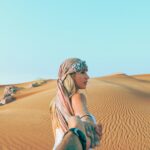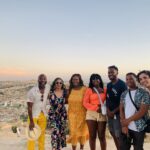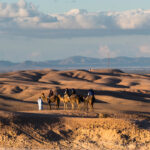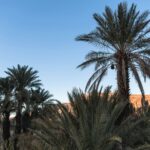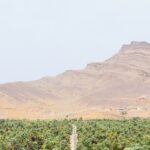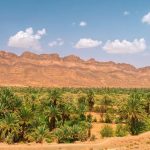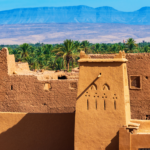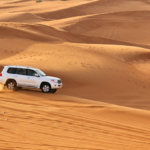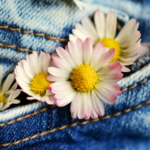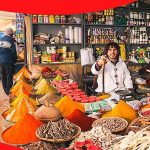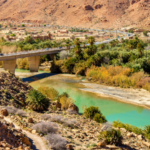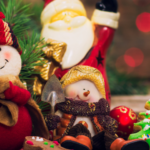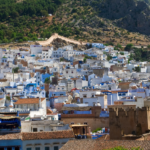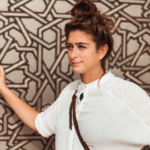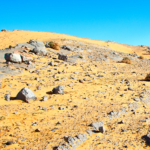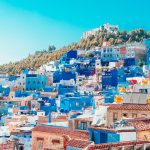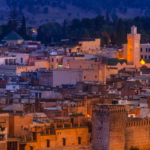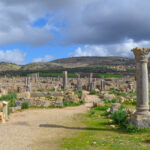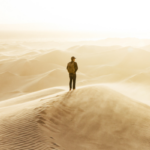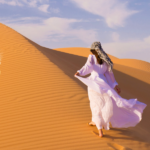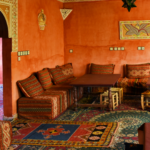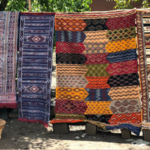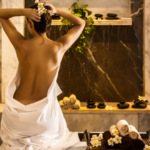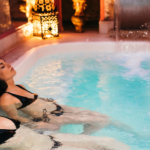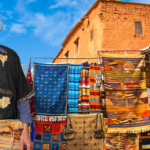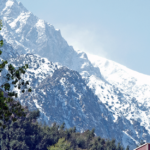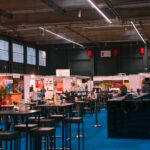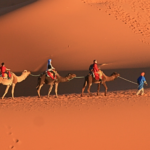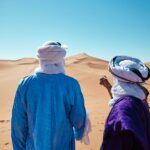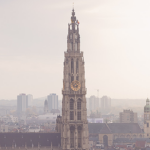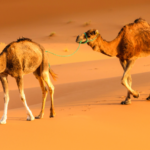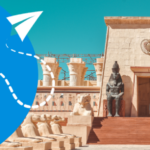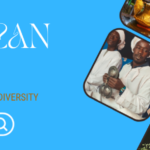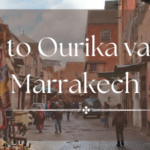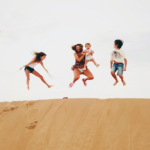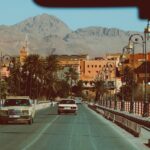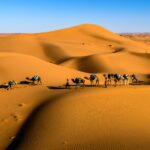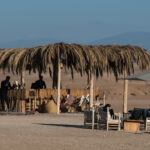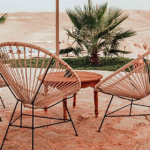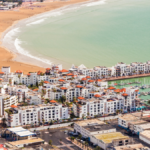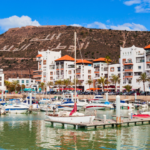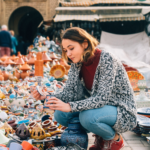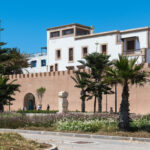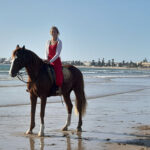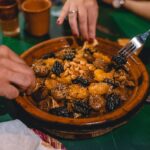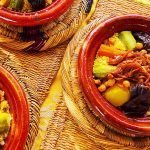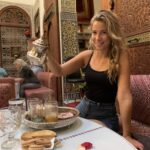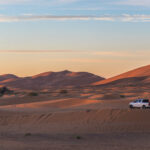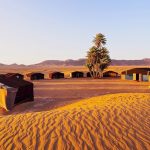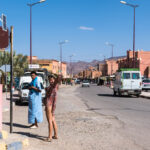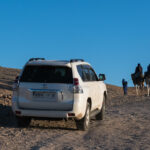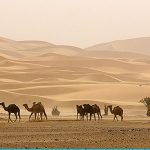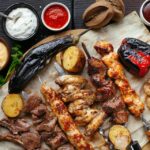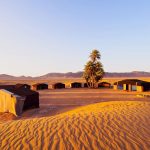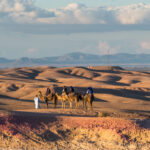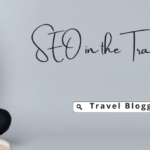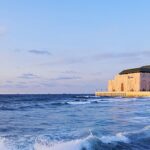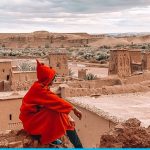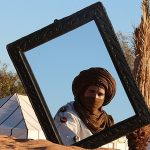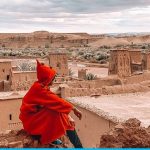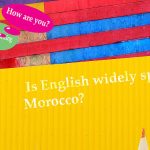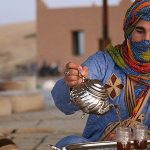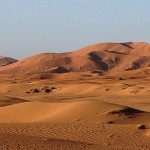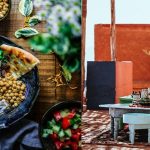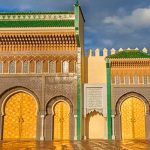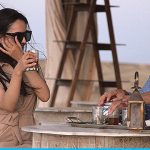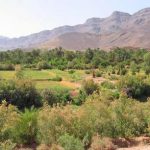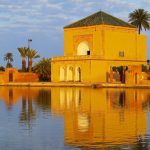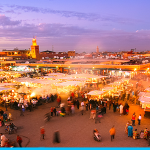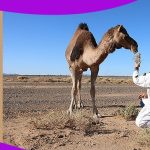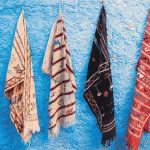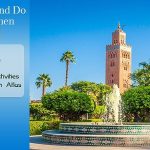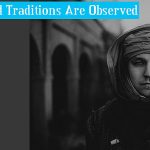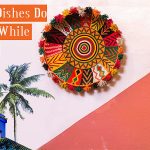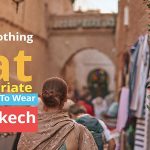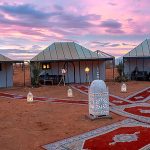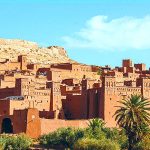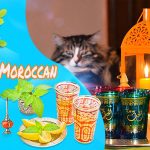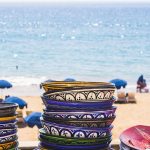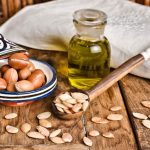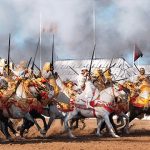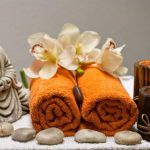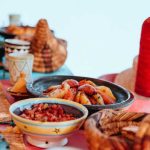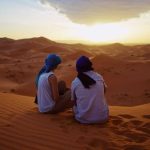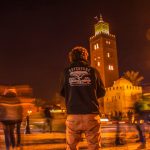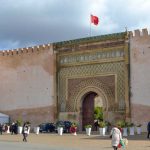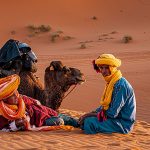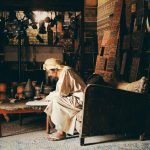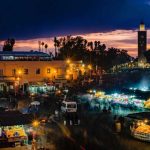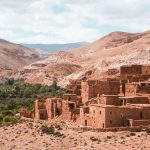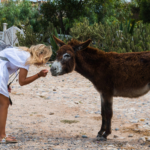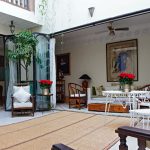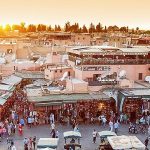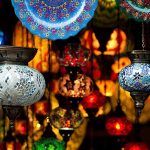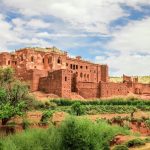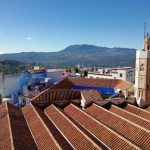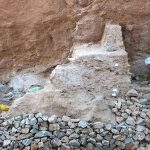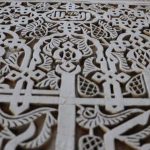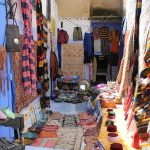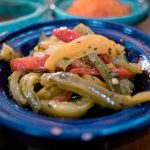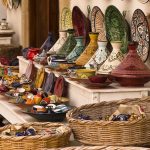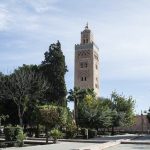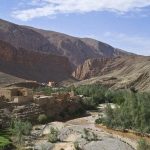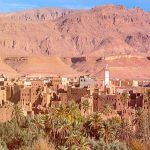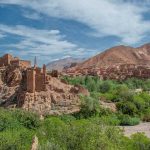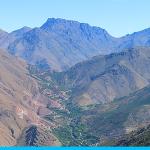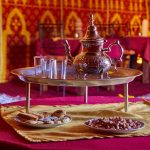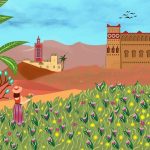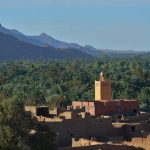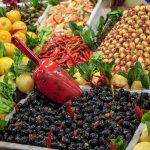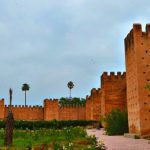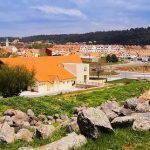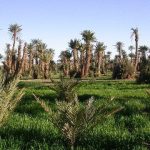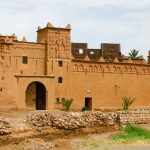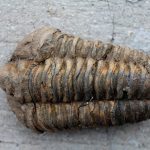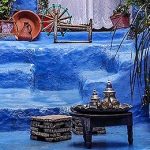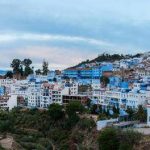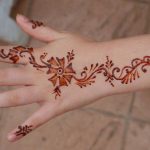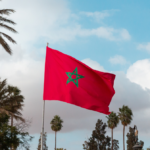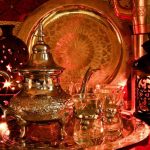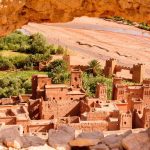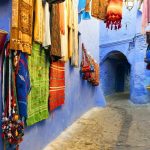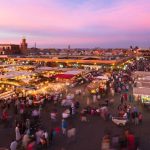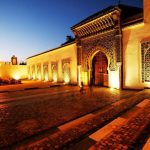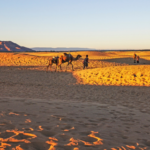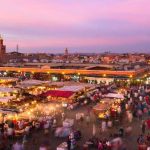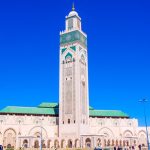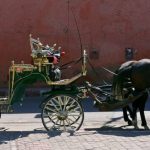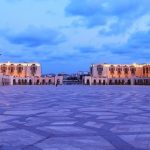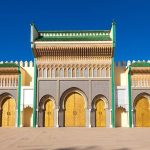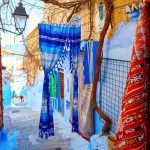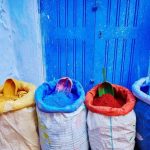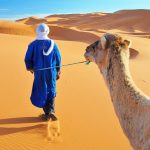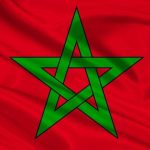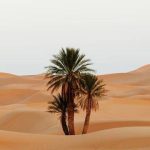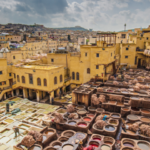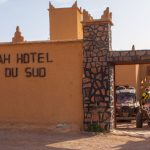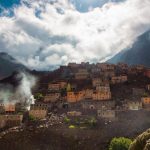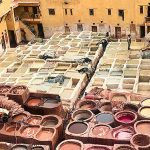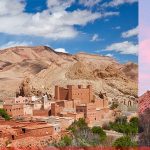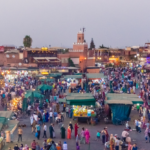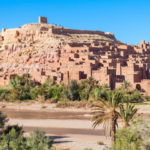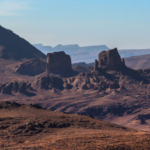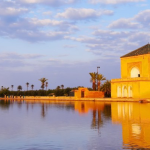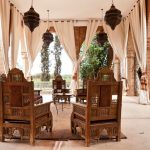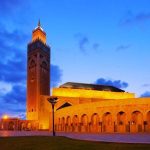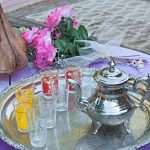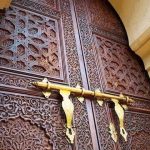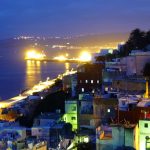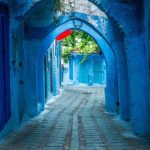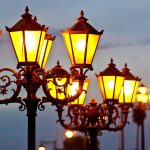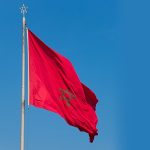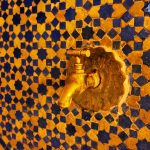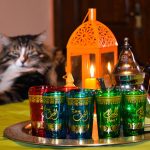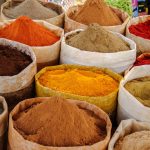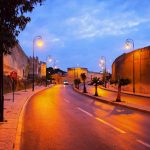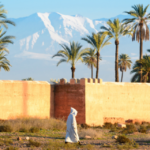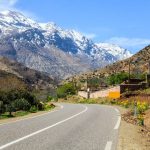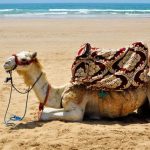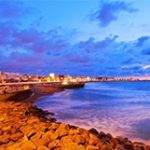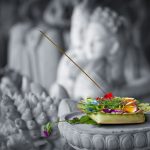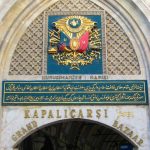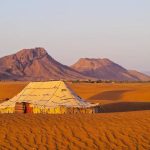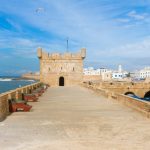Fans of the popular sitcom ‘Sex and The City’ might know that the Abu Dhabi scenes in the second movie were actually shot in Marrakech, Morocco. It seems appropriate to quote the original queen of shopping and fashion when discussing the best souvenirs to purchase while enjoying your vacation in Morocco. We provide an extensive list of items that you buy during your time in Morocco to eat, wear or adorn your house-ensuring your time in this mystical country is remembered for years to come.
“Shopping is my cardio.” – Carrie Bradshaw – Sarah Jessica Parker – Sex and The City.
Table of Contents

Traditional Moroccan Carpets in the Souk of Fes, Morocco
Moroccan Rugs
Colorful, textured Berber rugs of various tribal designs are iconic of Morocco. These handmade woolen rugs are for sale throughout the traditional souks as well as high end stores in Morocco. Each symbol and design has special meaning to the weaver- wishing fertility, celebrating a birth or marriage, or reflecting Moroccan landscapes. These tapestries are not only mesmerizingly beautiful, but each have their own unique story. These beautiful rugs are a statement piece in any home and can even be hang on the wall for decoration.
In the souks you may come across craftsmen weaving rugs and if you have a particular design in mind you could get one custom made and shipped home. Prices vary greatly per shop and region, and you are paying for the amount of workmanship that went into the item as well as its size and its age. We recommend saving your rug purchase until the end of your stay in Morocco so that you can get an idea of the different designs, prices and so that you don’t need to lug the rug around with you. Come prepared ready to haggle as the smooth talking salesmen love to charm tourists with mint tea. Our best tips are to take your time choosing a rug, but feign disinterest, try bargain and walk away if you are not happy with the price. Invariably they will call you back to come finish the sale. Also be aware of machine made carpets or those produced with synthetic material. Pure wool fibers do not burn, so burn a small corner of the rug with a cigarette lighter, if it burns and gives off an unpleasant plastic odour, you know its synthetic material.

Handmade and hand-painted Moroccan tagines in Safi, Morocco
Ceramics of Morocco
The shops of Morocco are stacked high with colorful pottery ranging from plates, to bowls in various sizes, as well as olive oil dispensers, tea pots and tagines (conical-shaped cooking pots). These intricate hand painted pieces have been made by Berber people for centuries and reflect the influence of the presiding cultures over time. Moroccan pottery is a lovely keepsake and gift to family back home, the items can be put on display or regularly used for your Moroccan inspired dinners.
Safi, in Western Morocco, is the largest pottery producer, due to clay being found in the area. Tourists can head to the factories in Safi to watch the long process of producing an ceramic item- from collecting the clay, to sculpting, firing and eventually painting and glazing the pottery. Fez and Meknes are also large producers of ceramics, with Fez known for its characteristic blue and white pottery.
Although not ceramic Berber baskets are also popular for decorative and functional purposes, often used in riads and restaurants for serving bread or as colorful wall hangings.

Traditional Moroccan slippers (babouche) in the market of Jemaa el-Fna, Marrakech
Moroccan Leather
Fez is famous for it century old tanneries that to this day produce leather using ancient techniques. It’s fascinating to visit the leather souks and watch the process of creating leather goods. Just be aware of the smell (thankfully the shopkeepers hand out mint to inhale!) Beautiful leather belts, boots, slippers, purses, wallets, handbags, luggage and foot poofs are available in different animal leathers and often stained and decorated in traditional patterns. Some products combine both rugs and leather for some unique pieces.
Hand stitched leather slippers called ‘babouche’ are traditional Moroccan attire. They are comfortable and come in a variety of designs, colors and details. Some are pointy, some are round, some have open backs whereas others are more like pump shoes. Often adorned with embroidery or sequins, babouche slippers presented in the souks are beautiful to admire and photograph and are a great souvenir to take home as they are small, lightweight and not fragile. Vogue actually named babouche slippers the ‘Must-Have Shoe of 2016’! So don’t forget to stuff some of these trendy shoes into your suitcase.
Check the quality of the leather products – using smell – I bought wallets in Fez that at the time smelt fine (because everything smelt terrible! But upon bringing them home they stink so bad I don’t want to use them!) Products can be custom made, for a reasonable price, in a few days and shipped to you, come armed with photographs of designs you like.

Argan oil is a plant oil produced by traditional methods in Morocco.
Argan oil and artisanal soaps
This miracle oil has gained increasing popularity in recent years and is found splashed on the labels of shampoos and hair products worldwide. Did you know argan oil is produced from a tree that only grows in a small region of Morocco! While enjoying your holiday you should purchase some of the good, untainted stuff- apply to your hair and skin for beautiful tangle free locks and smooth, moisturised scar free skin. True argan oil should be clear, somewhat murky and light yellow. If it’s too golden it has been mixed with cheaper oils! Look for dark glass bottles of argan oil that have not been sitting out in the sun. Some pharmacies have little argan oil presses to demonstrate the more modern way of extracting this oil.
Many souks sell a wide variety of argan oil products including pretty artisanal soaps, that make lovely gifts. Locally grown herbs and flowers including lavender, rosemary, rose petals, orange blossoms and jasmine are infused into the soaps creating beautifully scented hand made bars. The addition of argan oil to these soaps ensure that they are ultra moisturizing and gentle on the skin.
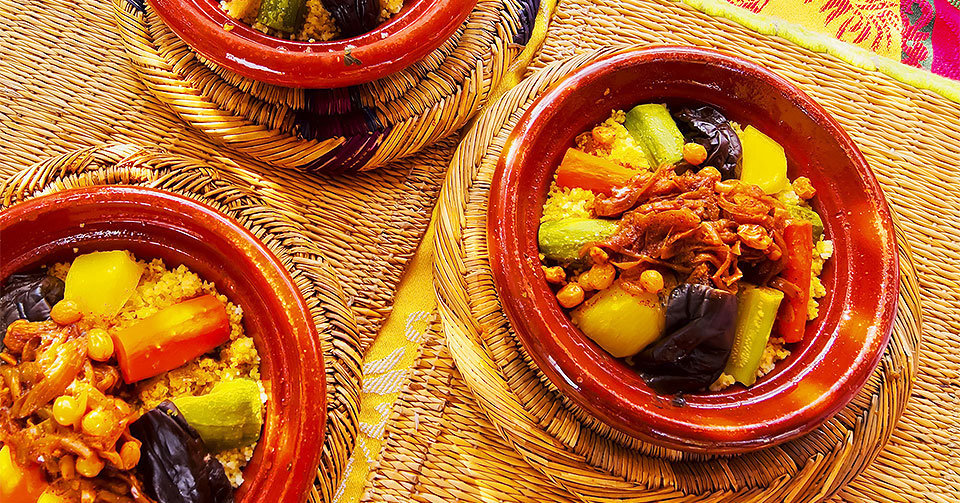
Couscous – traditional Moroccan food in Marrakech, Morocco, Africa
Foods and spices
Almonds, walnuts, figs, dates, and olives can be bought from any hanout (shops selling dried products). Look for ones frequented by locals as those catering to tourists heavily overcharge. Culinary grade argan oil is also a great purchase as it is delicious in salads and has numerous health benefits.
Ras el hanout, meaning ‘head of the shop’, is a common spice mix used in all sorts of Moroccan dishes. It is typically mixed by the local shopkeeper and includes spices such as cumin, cinnamon, allspice and ginger. Take the mouthwatering flavors of Morocco home with you to recreate your favorite dishes when you are back home! Also admire how beautifully the spice markets present their wares- perfect pyramids of colorful spices.

Colorful Moroccan lantern and plates in a souk.
Moroccan Lanterns
Marvel at the twinkly glow of shops selling Moroccan lanterns- from hanging lamps of various sizes, shapes and intricacy to table candle lanterns. These lanterns are a perfect keepsake and will add the romance to any room. Choose between beautiful colored glass and hammered metals, although try avoid aluminum ones as they tend to bend easily and may not get home in once piece.
For ages Moroccan craftsmen have produced stunning etched metal products as decorative pieces as well as practical items such as teapots, trays, and jewelry. Some are machine made, but one can still visit souks where craftsmen are hard at work etching detailed designs onto gorgeous metal (either brass, silver or copper) plates. Look out for machine etching- noticeable when the patterns are too uniform.

Morocco, traditional tea set – Moroccan teapot, ornate cups on a tray and bouquet of roses.
Moroccan Tea Set
Another age old tradition still alive today are ornate silver teapots engraved with patterns and matching glasses for drinking tea. Traditional green glass teacups were produced in Casablanca and were available in all souks, however, the factory has since closed down, and thus these pieces are more valuable and sort after. Make sure these are nicely packaged to ensure not breakage during your travels home. Practise the art of pouring tea like the locals do- ensure each glass has a good foam on top, because what is a Berber without his turban! This little ritual is bound to impress your friends and family back home.

A women with Moroccan clothing and accessories
Clothing and accessories
“I like my money where I can see it—hanging in my closet.” – Sarah Jessica Parker – Sex and The City.
Many Moroccan people, both men and women still wear traditional dress, called a djellaba. The long, flowing dresses come in a variety of styles and designs and help keep to cool in the hot desert conditions. In winter there are thicker wool djellabas to keep locals nice and warm during the icy conditions. The larger Moroccan cities have clothing boutiques that have modernised djellaba’s if you are keen to head home with a new, interesting outfit. Summer djellabas are made of cool material and can be worn stylishly with a belt or thrown over your costume when heading in the beach. Just think cleverly if you will use the outfit again after you leave Morocco, otherwise a more practical clothing item such as a scarf maybe be more practical.
Traditionally, Berber women received ornate silver jewelry from their husbands before marriage, thus ensuring that she is left with something to sell if she becomes widowed. These pieces are worn at weddings and include heavy, jewel laden headdresses, earrings, necklaces, bangles, bracelets and rings. Typically these pieces would feature beads of coral, amber or semi-precious stones plus cast coins. The geometric designs are meant to ward off evil spirits and protect the wearer. The Hand of Fatima or ‘khamsa’ are popular designs and are also believed to ward off bad, negative spirits. These unusual pieces are great souvenirs and have the benefit of being easily transported as you can simply wear them home!
You’ve read our list of Moroccan souvenirs, now it’s time for you to head out into the souks of Morocco and shop up a storm. Don’t forget to come prepared to haggle with the shopkeepers and to walk away if you feel they are not accommodating your requests. Too timid to undertake this shopping war then recruit a local guide to help you navigate the busy souks. Contact Desert Morocco Adventures to learn more about their day trips through various cities.
Join countless satisfied travelers who have experienced Morocco with us. We customize every detail to make your Moroccan adventure uniquely yours. Explore the Magic of Morocco with us!



